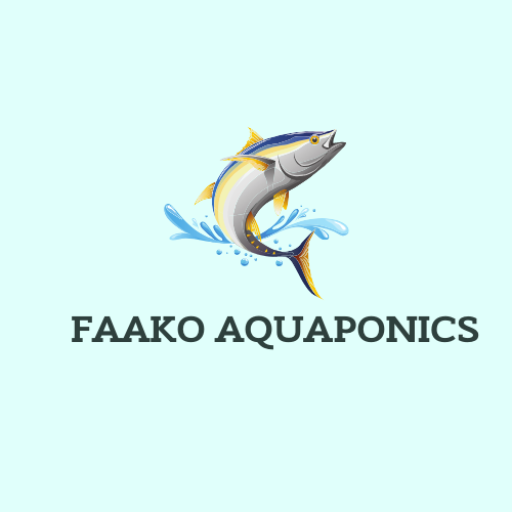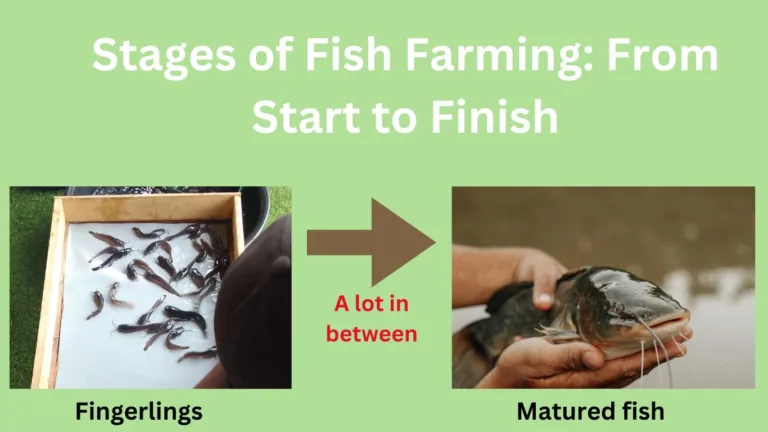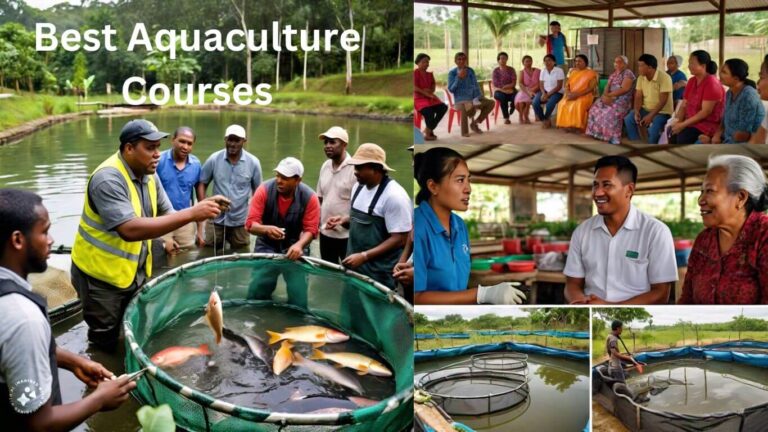Stages of Fish Farming is what every fish farmer must know, especially beginners. Before you dive into fish farming as a beginner, you need to read this article. It will educate you on all you need to know to start your fish farming journey.
We have to dive into the various stages of fish farming from the start of fish farming to the end. Stay glue.
The Various Stages of Fish Farming
1. Broodstock Management
Broodstock management refers to the careful selection, care, and maintenance of breeding fish in aquaculture operations. These fish, known as broodstock, are the foundation of a successful fish farm. The broodstock produces the offspring that will eventually become the stock for grow-out or production purposes. Is an important in the Stages of fish farming
Why is Broodstock Management Important?
1. Genetic Quality: You need to Select a high-quality broodstock to ensure the genetic integrity of your fish stock. This can lead to improved growth rates, disease resistance, and overall productivity.
2. Reproductive Performance: Proper management practices optimize reproductive performance, including spawning frequency, egg quality, and fertilization rates, ultimately leading to higher yields.
3. Disease Prevention: Healthy broodstock is less susceptible to diseases, reducing the risk of outbreaks that can devastate fish populations and economic losses. You need to ensure that your selected broodstock is free from diseases
4. Sustainability: Effective broodstock management contributes to the sustainability of fish farming by maintaining healthy populations and reducing the need for wild-caught fish for breeding purposes. All these contribute to the Stages of fish farming
Key Aspects of Broodstock Management
1. Selection: To Choose broodstock, you need to consider traits such as fast growth, resistance to diseases, and adaptability to farming conditions. Avoid inbreeding by periodically introducing new genetic material.
2. Nutrition: Provide balanced diets rich in essential nutrients to ensure optimal health and reproductive performance. Consult with a nutritionist to formulate feeds tailored to the specific requirements of your broodstock. And always make sure you do not overfeed or underfeed your fish selected as broodstock.
3. Environment: You need to ensure and Maintain optimal water quality parameters including temperature, dissolved oxygen levels, pH level, and ammonia concentration.
Proper environmental conditions are essential for the well-being and reproductive success of broodstock.
4. Health Management: Implement regular health checks and preventive measures to detect and control diseases early. Quarantine new stock before introducing them to existing populations to prevent the spread of pathogens.
5. Monitoring: Monitor broodstock behavior, feeding habits, and reproductive activity regularly.
Keep detailed records of breeding performance, including spawning dates, egg production, and hatch rates.
6. Handling and Transport: Handle broodstock with care to minimize stress during handling and transportation. Use appropriate equipment and techniques to prevent injuries and ensure the well-being of the fish. These are the stages of fish farming in broodstock
2. Spawning in Fish Farming
What is Spawning?
Spawning is the natural process of fish reproduction where female fish release eggs, and male fish release sperm (milt) to fertilize the eggs. That is what we refer to as fertilization in mammals.
Why is Spawning Important in Fish Farming?
Spawning is crucial in the stages of fish farming because it’s how new generations of fish are produced.
These offspring, once hatched, become the future stock for grow-out in aquaculture operations.
Successful spawning ensures a sustainable supply of fish for food and other purposes.
How Does Spawning Work?
1. Triggering: Spawning in fish is often triggered by environmental cues such as changes in water temperature, day length, or rainfall.
In aquaculture settings, fish farmers may use techniques like hormone manipulation or photoperiod control to induce spawning at desired times.
2. Courtship and Nesting: Before spawning, male fish may display courtship behaviors such as chasing, nudging, or fin displays to attract females.
Some species build nests or spawning beds where eggs are deposited and fertilized.
3. Egg Production: Female fish produce eggs (ova) in their ovaries. When the time is right, they release eggs into the water, either scattered or in clusters depending on the species.
4. Fertilization: Male fish release sperm (milt) into the water to fertilize the eggs. Fertilization typically occurs externally, with the sperm coming into contact with the eggs in the water.
5. Incubation: Once fertilized, the eggs are left to develop and hatch. The time it takes for eggs to hatch varies depending on factors like water temperature and species.
6. Hatching: When conditions are optimal, the eggs hatch into larvae, commonly known as fry. These tiny fish undergo further development before becoming juveniles and eventually reaching maturity. All are part of the stages of fish farming
Spawning Management in Fish Farming
1. Environmental Control: Maintain optimal environmental conditions such as water temperature, pH level, and oxygen levels to simulate natural spawning triggers.
2. Breeding Stock Selection: Choose healthy, sexually mature broodstock with desirable genetic traits to maximize reproductive success.
3. Feeding and Nutrition: Provide balanced diets rich in essential nutrients to ensure the health and fertility of breeding fish.
4. Monitoring and Record-Keeping: Keep track of spawning activities, egg production, fertilization rates, and hatch rates to assess breeding performance and make informed management decisions.
5. Handling and Care: Handle broodstock with care during spawning operations to minimize stress and maximize reproductive potential.
3. Egg Incubation in Fish Farming
What is Egg Incubation?
Egg incubation is the critical stage in fish farming where fertilized eggs develop and hatch into larvae, commonly known as fry. During this process, optimal conditions are provided to ensure the healthy growth and development of the embryos until they are ready to emerge into the world.
Why is Egg Incubation Important?
Egg incubation as part of the stages of fish farming is a crucial step in fish farming because it’s where the next generation of fish is nurtured and prepared for life. The success of egg incubation directly impacts the overall productivity and sustainability of aquaculture operations.
The Egg Incubation Process
1. Collection: Fertilized eggs are collected either from natural spawning events or through induced spawning techniques in aquaculture facilities.
2. Handling: Careful handling is essential to prevent damage to the delicate eggs. They are gently transferred to incubation tanks or trays designed to provide optimal conditions for development.
3. Water Quality: Maintaining good water quality is crucial during egg incubation. Oxygen levels must be high, and water temperature should be controlled to match the species’ requirements.
4. Incubation Tanks: Eggs are placed in specialized incubation tanks or trays with gentle water flow to ensure adequate oxygenation and prevent suffocation.
The tanks may be equipped with screens or mesh to prevent eggs from clumping together.
5. Monitoring: Eggs are monitored closely throughout the incubation period to track development and detect any issues. Dead or unfertilized eggs are removed promptly to prevent contamination.
6. Hatching: As the embryos develop, they undergo a series of changes until they are ready to hatch. This process can take anywhere from a few days to several weeks, depending on the species and environmental conditions.
7. Larval Care: Once hatched, the larvae, or fry, are carefully cared for in nursery tanks where they receive appropriate feed and environmental conditions to support their growth and development.
Tips for Successful Egg Incubation
1. Optimal Environment: Maintain consistent water quality parameters, including temperature, pH level, and oxygen levels, throughout the incubation period.
2. Regular Monitoring: Check eggs regularly for signs of development and remove any dead or unfertilized eggs promptly to prevent contamination.
3. Gentle Handling: Handle eggs with care to avoid damage and ensure the best possible survival rate.
4. Attention to Detail: Keep detailed records of incubation conditions and hatching rates to evaluate and improve incubation practices over time.
4. Larval Rearing in Fish Farming
What is Larval Rearing?
Larval rearing is one of the stages in fish farming where newly hatched larvae, also known as fry, are nurtured and cared for until they reach a stage where they can be transferred to grow-out tanks or ponds. This crucial phase requires careful attention to ensure the healthy growth and development of the young fish.
Why is Larval Rearing Important?
Larval rearing is essential in fish farming because it’s where the delicate fry transition from their initial hatching stage to become robust juveniles capable of surviving in larger rearing environments. Proper care during this phase sets the foundation for the future success of the fish.
The Larval Rearing Process
1. Nursery Tanks: Newly hatched larvae are transferred to specialized nursery tanks equipped with optimal environmental conditions for their growth and development.
These tanks typically have controlled water flow, temperature, and lighting to depict natural conditions.
2. Feeding: Providing appropriate feed is crucial for the growth and development of fish larvae.
Depending on the species, larvae may be fed live prey such as rotifers, Artemia (brine shrimp), or specially formulated microdiets.
3. Water Quality Management: you need to maintain good water quality during larval rearing. Regular monitoring of parameters such as temperature, pH level, ammonia, and oxygen levels is necessary to ensure optimal conditions for growth.
4. Tank Cleaning: Regular cleaning and maintenance of nursery tanks are essential to prevent the buildup of waste and harmful pathogens that can compromise the health of the larvae.
5. Disease Management: You need to Implement strict biosecurity measures and disease prevention protocols to minimize the risk of disease outbreaks that can devastate larval populations.
6. Monitoring and Observation: Larvae are closely monitored and observed for signs of stress, disease, or abnormal behavior. Adjustments to feeding regimes or environmental conditions may be made based on observations to optimize growth and survival.
Tips for Successful Larval Rearing
1. Start Small: Begin with a manageable number of larvae to gain experience and ensure proper care and attention can be provided.
2. Quality Feed: Use high-quality feeds appropriate for the developmental stage of the larvae. Ensure feeds are fresh and free from contamination.
3. Regular Water Changes: Perform regular water changes to maintain water quality and remove waste products that can accumulate in the tank.
4. Temperature Control: Keep water temperature stable within the optimal range for the species being reared to avoid stress and developmental issues.
5. Patience and Persistence: Larval rearing can be challenging, but patience and persistence are key. Be prepared to adapt and learn from experience to improve techniques and achieve better results.
5. Fingerling Production in Fish Farming
What are Fingerlings?
Fingerlings are juvenile fish that have reached a stage where they have developed fins that resemble fingers.
The fish are typically larger than larvae but still small and delicate, making them ideal for stocking into grow-out ponds or tanks where they will continue to grow until they reach marketable sizes.
Why is Fingerling Production Important?
Fingerling production plays a crucial role in the stages of fish farming as it ensures a steady supply of juvenile fish for stocking grow-out facilities.
By producing healthy fingerlings, fish farmers can maintain consistent production cycles and meet market demand for fish products.
The Fingerling Production Process
1. Nursery Rearing: Fingerlings are usually raised in nursery tanks or ponds where they receive optimal care and nutrition to support their growth and development. You need to create facilities and equip them with controlled environmental conditions to depict natural habitats.
2. Feeding: Fingerlings are fed a diet appropriate for their size and species. Depending on the fish species and availability, feeds may consist of formulated pellets, live feeds such as Artemia (brine shrimp) bloodworms, or a combination of both.
3. Water Quality Management: Regular monitoring of parameters such as temperature, pH level, dissolved oxygen, and ammonia levels ensures optimal conditions for growth and reduces the risk of stress and disease.
4. Tank Cleaning and Maintenance: Regular cleaning and maintenance of nursery tanks or ponds are necessary to remove waste and prevent the buildup of harmful pathogens. This helps to ensure a clean and healthy environment for the fingerlings to thrive.
5. Grading and Sorting: As fingerlings grow, they may need to be graded and sorted based on size to prevent overcrowding and competition for food. This allows for more efficient feeding and ensures uniform growth among the fingerlings.
6. Health Management: Implementing disease prevention measures and monitoring for signs of illness are critical to maintaining the health of fingerlings. Prompt treatment of any health issues can help prevent outbreaks and minimize losses.
Tips for Successful Fingerling Production
1. Start with Quality Broodstock: Select healthy, genetically superior broodstock to produce high-quality fingerlings with desirable traits such as fast growth and disease resistance.
2. Optimal Feeding: Provide a balanced diet tailored to the nutritional needs of the fingerlings.
Ensure feeds are of high quality and are offered in appropriate amounts to support growth without causing overfeeding or waste.
3. Attention to Water Quality: Regularly monitor water quality parameters and maintain optimal conditions to promote healthy growth and reduce stress on the fingerlings.
4. Regular Monitoring and Record-Keeping: Keep detailed records of growth rates, feed consumption, and any health issues encountered during fingerling production.
This information can help identify areas for improvement and optimize production practices.
5. Invest in Infrastructure: Invest in appropriate infrastructure such as nursery tanks, aeration systems, and water quality monitoring equipment to support efficient fingerling production.

6. Site Selection in Fish Farming
Why is Site Selection Important?
Site selection is one of the most critical decisions as one of the stages in fish farming. It directly impacts the success and sustainability of your operation.
The right location can provide access to essential resources, favorable environmental conditions, and markets for your products, while the wrong location can lead to costly setbacks and challenges.
Factors to Consider in Site Selection
1. Water Quality: Choose a site with access to clean, abundant water sources. Water quality parameters such as temperature, pH level, dissolved oxygen levels, and nutrient concentrations should be suitable for the species you intend to farm.
2. Topography and Soil Quality: Consider the topography and soil characteristics of the site.
Flat or gently sloping terrain is ideal for pond-based aquaculture, while rocky or uneven terrain may require more intensive site preparation.
Soil should be well-drained and free from contamination to support pond construction and water quality maintenance.
3. Accessibility: Select a site that is easily accessible by road or waterway to facilitate transportation of inputs such as feed, equipment, and fish, as well as distribution of harvested products to markets.
4. Climate and Weather Conditions: Assess the local climate and weather patterns to ensure they are suitable for the species you plan to farm. Extreme temperatures, heavy rainfall, or prolonged droughts can impact fish health and productivity.
5. Environmental Regulations: Familiarize yourself with local regulations and zoning ordinances governing aquaculture activities in the area.
Ensure compliance with environmental laws and obtain any necessary permits or approvals before establishing your fish farm.
6. Market Accessibility: You need to consider proximity to markets and distribution channels for your fish products. Access to local markets, processing facilities, and transportation infrastructure can influence the profitability and success of your fish farming operation.
7. Security and Safety: Evaluate the site’s security and safety considerations, including risks of theft, vandalism, or natural disasters. Implement measures to safeguard your investment and protect your fish from potential threats.
8. Source of Electricity: You need to make sure that the location has access to electricity. This will help if you want to use the Recirculating Aquaculture System (RAS).
Steps in Site Selection
1. Research: Gather information about potential sites by conducting site visits, consulting local authorities, and researching environmental conditions, land use patterns, and market opportunities in the area.
2. Assessment: Evaluate each potential site based on the factors outlined above, taking into account your specific goals, preferences, and constraints.
3. Analysis: Compare the strengths and weaknesses of each site to determine which one best meets your needs and objectives. Consider factors such as cost, feasibility, and long-term sustainability.
4. Decision: Make an informed decision based on your analysis and choose the site that offers the best combination of advantages for your fish farming venture.
7. Pond Preparation in Fish Farming
Why is Pond Preparation Important?
Pond preparation as the stage of fish farming is crucial as it creates the optimal environment for fish to thrive and grow. Properly prepared ponds support healthy water quality, promote natural food production, and provide a habitat for fish to feed, reproduce, and grow.
By preparing your pond correctly, you set the stage for a successful and sustainable fish farming operation.
Steps in Pond Preparation
1. Site Selection: Choose a suitable location for your pond based on factors such as accessibility, water availability, soil quality, and topography.
Ensure the site meets regulatory requirements and has adequate space for pond construction and operation.
2. Pond Design and Sizing: Determine the size and shape of your pond based on the species you intend to farm, desired production goals, and available resources. You need to consider factors such as water depth, surface area, and shoreline configuration to optimize pond functionality and efficiency.
3. Clearing and Leveling: Clear the site of vegetation, rocks, and debris, and level the ground to create a smooth, uniform surface for pond construction. Remove any obstructions that could impede water flow or pose hazards to fish.
4. Aquatic Vegetation Management: Manage aquatic vegetation to prevent overgrowth and maintain a healthy balance of plant life in the pond. Use methods such as mechanical removal, chemical treatments, or biological control agents as necessary to control weeds and algae.
Tips for Successful Pond Preparation
1. Plan Ahead: Take time to research, plan, and prepare your pond properly before stocking fish.
Proper planning and preparation can prevent common problems and ensure a successful outcome.
2. Seek Expert Advice: You need to consult with experienced fish farmers, aquaculture professionals, or extension agents for guidance and advice on pond preparation and management techniques.
3. Monitor and Adapt: Regularly monitor pond conditions, water quality, and fish health, and be prepared to adjust management practices as needed to address any issues or challenges that arise.
4. Be Patient: Building and preparing a fish pond takes time and effort. Be patient and diligent in your efforts, and remember that good things come to those who wait.
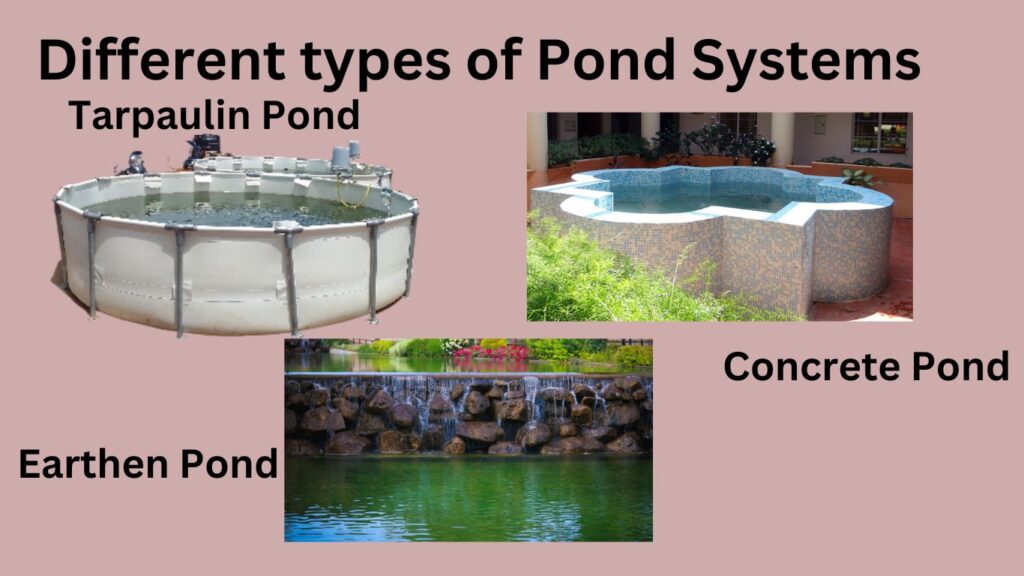
8. Pond Filling and Conditioning in Fish Farming
Why is Pond Filling and Conditioning Important?
Pond filling and conditioning are crucial stages of fish farming as they create the optimal environment for fish to grow and thrive. By filling the pond with clean water and conditioning it to the right conditions, you set the stage for successful fish production. Let’s explore the key aspects of this process.
Steps in Pond Filling and Conditioning
1. Disinfecting the Pond: Before you fill your fish pond with clean water, you need to disinfect your fish pond. This can be done by salt bathing the pond or bathing the pond with natural herbs. You can also use orthodox medicine to disinfect the fish pond.
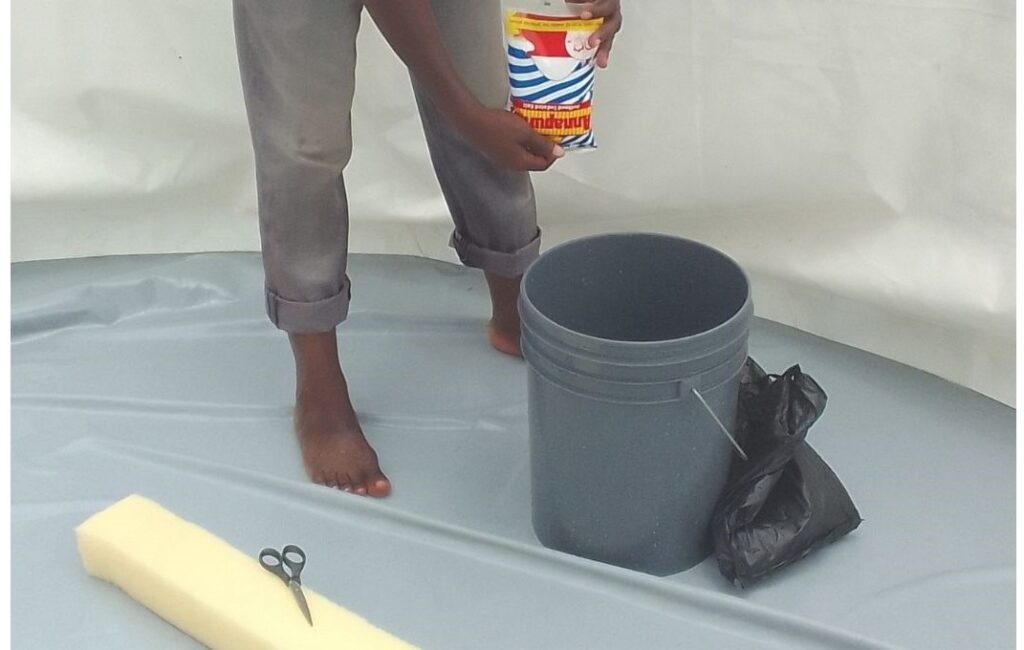
2. Filling the Pond: Begin by filling the pond with clean, fresh water from a reliable source such as a well, spring, or municipal supply.
Ensure the water is free from contaminants and pollutants that could harm the fish.
3. Water Quality Testing: You need to test the water quality parameters such as temperature, pH level, dissolved oxygen, ammonia, and nitrite levels to ensure they are within the optimal range for fish farming.
Adjustments may be needed to bring water parameters into the desired range.
4. Water Aeration: Install aeration equipment such as aerators or air stones to oxygenate the water and maintain adequate dissolved oxygen levels. Proper aeration is essential for the health and survival of fish, especially in ponds with high stocking densities or during periods of low oxygen availability.
5. Pond Conditioning: Condition the pond water by adding necessary supplements or treatments to optimize water quality and create a favorable environment for fish. This may include adding lime to adjust pH, adding fertilizers to promote natural food production, or applying treatments to control algae or parasites.
5. Acclimation: Allow sufficient time for the pond water to stabilize and acclimate to the desired conditions before stocking fish. This may take several days to weeks, depending on factors such as water temperature, pH, and initial water quality.
Tips for Successful Pond Filling and Conditioning
1. Start with Clean Water: Use clean, fresh water from a reliable source to fill the pond. Avoid using water from sources that may contain pollutants or contaminants that could harm the fish.
2. Monitor Water Quality: you have to regularly monitor the water quality parameters and make adjustments as needed to maintain optimal conditions for fish growth and health.
3. Be Patient: Take your time to fill and condition the pond properly before stocking fish. Rushing the process can lead to problems later on and jeopardize the success of your fish farming venture.
4. Seek Advice: Consult with experienced fish farmers, aquaculture professionals, or extension agents for guidance and advice on pond filling and conditioning techniques.
9. The Grow-Out Phase in Fish Farming
What is the Grow-Out Phase?
The grow-out phase in fish farming is the stage in fish farming where juvenile fish, often referred to as fingerlings, are raised to reach marketable size or maturity. During this phase, fish are provided with optimal conditions, nutrition, and care to promote healthy growth and development.
Key Aspects of the Grow-Out Phase
1. Housing: Depending on the scale of your operation and the species being raised, fish may be housed in ponds, tanks, cages, or raceways during the grow-out phase.
The choice of housing depends on factors such as water availability, space, and environmental conditions.
2. Feeding: Provide a balanced diet tailored to the nutritional needs of the fish species being raised. Feed should be formulated to promote rapid growth and efficient feed conversion while minimizing waste and environmental impact.
The feed can be pelleted from 1.0mm – 8.0mm depending on the size of the fish.
Check out HERE for a full article on Feed.
3. Water Quality Management: Always Maintain optimal water quality parameters such as temperature, dissolved oxygen, pH level, and ammonia levels to support healthy growth and prevent stress or disease outbreaks.
Regular monitoring and management of water quality are essential during the grow-out phase.
4. Health Management: Implement disease prevention measures and monitor fish health regularly to detect and address any issues promptly.
Quarantine new fish before introducing them to existing populations to prevent the spread of diseases.
5. Monitoring and Record-Keeping: You need to Keep detailed records of feed consumption, growth rates, mortality, and any health issues encountered during the grow-out phase.
This information can help evaluate performance, identify trends, and make informed management decisions.
Tips for Successful Grow-Out
1. Start with Quality Fingerlings: Begin with healthy, high-quality fingerlings from reputable sources to ensure a strong start to the grow-out phase.
2. Optimize Feeding: Provide consistent and appropriate feeding regimes to promote rapid growth and efficient feed utilization.
Monitor feed conversion ratios and adjust feeding practices as needed to optimize performance.
3. Maintain Ideal Water Conditions: Regularly monitor and manage water quality parameters to create a healthy and supportive environment for fish growth. Address any issues promptly to minimize stress and maximize productivity.
4. Stay Vigilant: Keep a close eye on fish health and behavior, and be proactive in addressing any signs of stress, disease, or abnormality.
You need to always have early intervention can prevent problems from escalating and minimize losses.
10. Harvesting in Fish Farming
What is Harvesting?
Harvesting in fish farming refers to the process of gathering and removing fish from their rearing environment for sale, consumption, or further processing. It’s the culmination of months of hard work and dedication in nurturing the fish to reach marketable size or maturity.
Key Aspects of Harvesting
1. Timing: Determine the optimal time for harvesting based on factors such as fish size, market demand, and growth rates. Fish should be harvested when they have reached the desired size and quality for sale or processing.
2. Method: Choose the appropriate harvesting method based on the species being raised and the rearing environment. Common harvesting methods include seining, netting, trapping, or draining ponds or tanks.
3. Handling: Handle fish with care during harvesting to minimize stress and ensure product quality. Use proper equipment and techniques to avoid injury to the fish and maintain their freshness.
4. Sorting: Sort fish based on size, quality, and market specifications during harvesting. This ensures uniformity in product appearance and facilitates marketing and sales.
5. Transportation: Transport harvested fish to market or processing facilities promptly and in appropriate containers to maintain product quality and freshness. Keep fish cool and well-ventilated during transit to prevent spoilage.
6. Processing: Depending on market demand and consumer preferences, harvested fish may be processed further, including gutting, filleting, or freezing, to prepare them for sale or distribution.
Tips for Successful Harvesting
1. Plan Ahead: Develop a harvesting plan that considers factors such as fish size, market demand, and logistics. Proper planning ensures a smooth and efficient harvesting process.
2. Work Efficiently: Coordinate with staff and equipment to execute harvesting operations efficiently. Minimize handling time and ensure fish are processed and transported promptly to maintain product quality.
3. Quality Control: Implement quality control measures during harvesting to ensure product integrity and compliance with regulatory standards. Inspect fish for signs of disease, injury, or contamination before sale or processing.
4. Drain Pond Water: Before you start harvesting your fish, if you intend to harvest all of them, you need to drain the water till it finishes leaving just the finish for easy picking. But if you are not going to harvest all, then drain and still have some water in the pond. If the water is so much, it will be difficult to get the fish.
5. Communication: Maintain open communication with buyers, processors, and other stakeholders to coordinate harvesting schedules and meet market demand effectively.
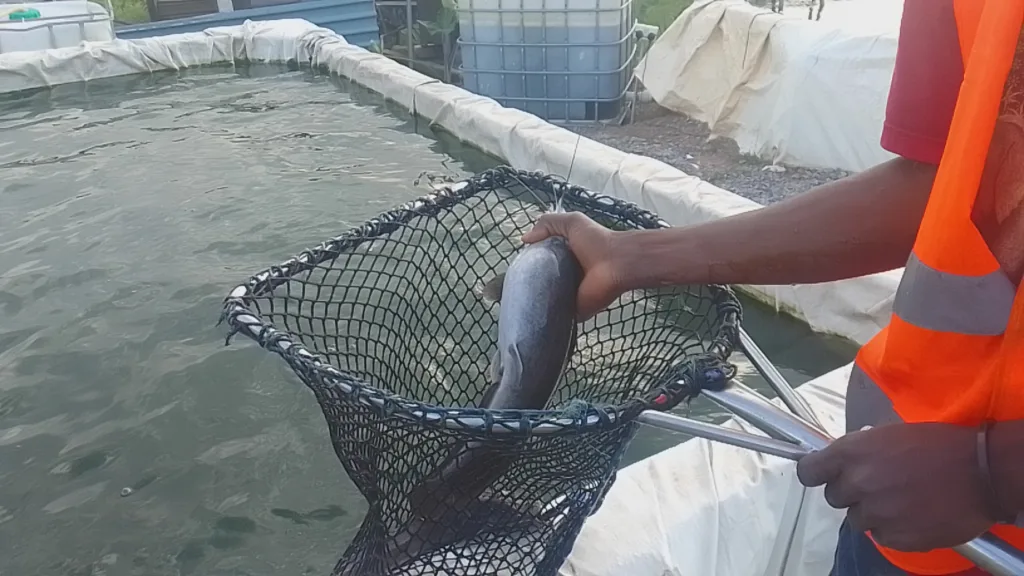
11. Processing and Marketing in Fish Farming
Processing fish involves transforming harvested fish into marketable products that meet consumer demands and preferences. Here are the key steps in fish processing:
1. Cleaning and Gutting: Fish are cleaned and gutted to remove scales, entrails, and other undesirable parts. This improves the appearance and quality of the fish and prepares them for further processing.
2. Filleting: Depending on consumer preferences, fish may be filleted to remove bones and create boneless fillets. Filleting is a common practice for species like salmon, trout, and tilapia, making them more convenient and versatile for cooking.
3. Freezing: Fish can be frozen whole, as fillets, or as value-added products such as fish sticks or portions. Freezing preserves the freshness and quality of the fish, extending its shelf life and allowing for distribution to distant markets.
4. Packaging: Packaged fish products are labeled and packaged in suitable containers or packaging materials for retail sale or distribution. Packaging may include vacuum-sealed bags, plastic trays, or cardboard boxes, depending on the product and market requirements.
Marketing Fish
Marketing fish involves promoting and selling fish products to consumers through various channels. Here are the key steps in marketing fish:
1. Market Research: Conduct market research to understand consumer preferences, trends, and demand for fish products. Identify target markets and develop marketing strategies to reach and attract customers.
2. Branding and Packaging: Develop a strong brand identity and packaging design that appeals to your target audience. Create packaging that highlights the freshness, quality, and sustainability of your fish products.
You can also label your package with your brand’s name, contact details, logo, and other necessary information.
3. Distribution: Establish distribution channels to deliver fish products to retailers, wholesalers, restaurants, and consumers. Consider partnering with distributors or retailers to expand your market reach and increase sales opportunities.
4. Promotion: Promote your fish products through advertising, social media, and other marketing channels to raise awareness and generate interest among consumers. Highlight the unique features, benefits, and values of your products to differentiate them from competitors.
5. Customer Service: Provide excellent customer service to build trust and loyalty among consumers. Address customer inquiries, feedback, and complaints promptly and professionally to ensure a positive shopping experience.
Tips for Success
1. Quality Matters: Focus on delivering high-quality fish products that meet or exceed consumer expectations. Consistently delivering fresh, flavorful, and well-packaged fish will help build a loyal customer base.
2. Sustainability: Emphasize the sustainability of your fish farming practices and the environmental benefits of choosing responsibly sourced fish products. Consumers are increasingly conscious of sustainability issues and prefer products that align with their values.
3. Adaptability: Stay flexible and adaptable to changing market conditions, consumer preferences, and industry trends. Continuously evaluate and adjust your marketing strategies to remain competitive and meet evolving customer needs.
4. Relationship Building: Cultivate strong relationships with customers, suppliers, and business partners to foster trust and collaboration. Building mutually beneficial partnerships can help drive growth and success in the fish farming industry.
Conclusion
As a fish farmer, if you are able to implement the stages of fish farming outlined above, you shall be successful in your business.
despite the fact that this post is lengthy and helping, is still has not covered everything in details. I have written a detailed eBook on gumroad which is about 102 pages. Check it out now.
